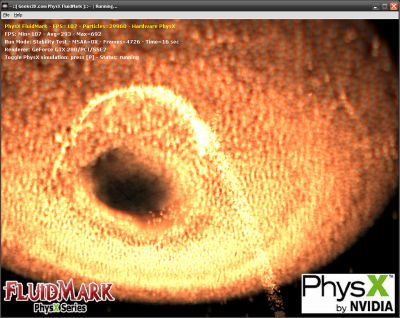PhysX FluidMark is a physics benchmark based on NVIDIA PhysX engine. This benchmark performs a fluid simulation by imitating the renderering of lava. Real physics parameters such as viscosity are used. SPH (Smoothed Particle Hydrodynamics) algorithm is enabled to increase the realism of the simulation.
PhysX FluidMark can run in pure software mode (all calculations are done on the CPU), or in hardware mode. Hardware mode includes 2 kinds of hardware:
- Ageia PhysX PPU
- GeForce PhysX - GeForce 8/9/GTX200 graphics cards only
This benchmark exploits OpenGL for graphic acceleration and requires an OpenGL 2.0 compliant graphics card: NVIDIA GeForce 5/6/7/8/9/GTX200 (and higher), AMD/ATI Radeon 9600+, 1k/2k/3k/4k (and higher) or a S3 Graphics Chrome 400 series with the latest graphics drivers.

